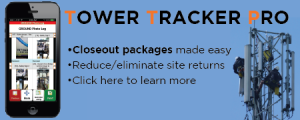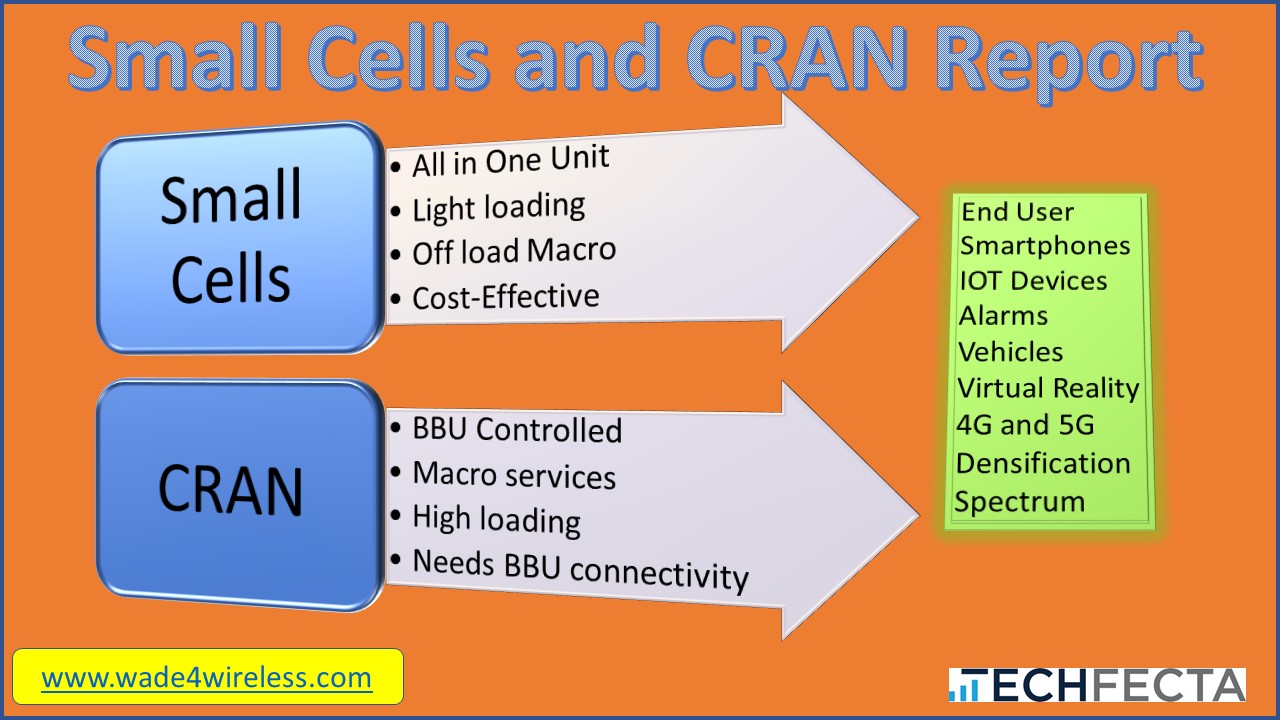Is there a solution for indoor mmwave 5G? Is there 5G DAS? I know that companies are just now starting to look at this. I don’t mean the 5G upgrade to the existing spectrum Sprint and T-Mobile have that well in hand. They are working to improve the throughput to the device over the existing spectrum. The DAS systems of today can easily handle the existing spectrum for 5G, but will that open up the 5G expectations of low latency and very high broadband? Of course not.
What I am talking about is indoor mmwave. This is going to be a gamechanger. However, it is still being developed. It can use the existing spectrum to do LAA, whether it’s 5G or LAA, it can all aggregate together for the carrier. We know that iBwave is working on 28GHz solutions, but the problems go beyond the technical solutions, we need to think of the business solution, like who will pay. The carriers do not want to migrate indoors. What can we do? Open more spectrum for 5G and PLTE.
When working with indoor enterprise businesses, they don’t want to pay for the data they use indoors. That’s why Wi-Fi is so attractive. If they want a carrier’s coverage, they have to rely on DAS. However, 5G using mmwave spectrum indoors for heavy broadband usage and ultra-reliable low latency will need a new business plan. One that they may not have worked out yet. While we know that LTE and 5G can handle almost anything, indoors it is Wi-Fi that dominates.
But, will Wi-Fi be the indoor solution moving forward? We all know that Wi-Fi 6 is coming and we’re all counting on the 6GHZ spectrum to open up the potential for 802.11ax with larger channels, better carrier separation, and improved throughput. IT would be a game changer. But, wouldn’t it make sense to reserve a large swath of spectrum where 5G could play without being interfered by Wi-Fi? It’s just like when Wi-Fi forces LTE-U to add listen before Talk so it didn’t interfere with Wi-Fi. It’s time we reserve unlicensed spectrum for 5G and LTE.
What if, the 6GHz was opened up to Private LTE (PLTE) and 5G NR instead as a supplement to mmwave indoor systems? That makes so much more sense to me to have new technology available to everyone indoors. Since 6GHz is going to be used indoors exclusively, then use it wisely for 5G. The FCC has to consider this when evaluating indoor 5G coverage and private networks. A simple hotspot standalone 5G NR access point would offer so much more to the advancement of indoor wireless networking. It makes more sense especially since the LTE in the ISM spectrum needed to add listen before talk. This time, they should dedicate spectrum to PLTE and 5G NR in the unlicensed 6GHz band.
The thing is, we expect to have mmwave indoors, specifically 28GHz, for enterprise use with the carrier’s permission. But, if we can use the open 1GHz of 6GHz spectrum, there would be little need to build expensive DAS systems when we could use 5G NR systems in that spectrum specifically for indoor use.
I know that iBwave is already releasing design software and services that support mmwave. This is going to be a gamechanger, but how will the carriers charge for indoor mmwave? If they have to build expensive DAS systems to support, they won’t do it.
So, what are the other options?
- Lease the spectrum with the business tying the system back to their core.
- Release the indoor system with design approval for the DAS system then allow the company to offload all the inside data in their data center, which would technically be the EDGE, then let the public traffic go back to the carrier’s core.
- Allow the company to build its own system and put a controlling server in their data room so that all public traffic passes safely back to the carrier and all other data goes to the carrier’s core.
- Allow micro MNO or MVNO to build a system on their mmwave spectrum and do a roaming agreement back and forth.
- License the spectrum to a micro MNO MVNO to do all indoor systems in a given region.
There are options. This can work and would keep the DAS business alive and healthy. However, indoor coverage will need more than mmwave. It will also need sub 6GHz for the carriers to have voice and outside customers have coverage in that building.
If we could allow the 6GHz spectrum to be dedicated to PLTE and 5G, then it would solve a lot of future growth problems for professionals.
Where is this coming from?
I have been working with companies to roll out indoor 5G DAS. This makes sense of the spectrum allows for a differentiator. For instance, the indoor DAS of today is pretty much an extension of mobile coverage. All of the existing spectrum being used for LTE mobile coverage. This is not going to be the case for much longer. Indoor spectrum has to serve more of a purpose than just an extension of outdoor mobile coverage.
It’s great to have a smartphone that can get 1 Gbps download speeds. I mean, who doesn’t want that? However, is that the business case that Verizon and AT&T are looking for? They know that mmwave is here for a completely different use case. They didn’t limit their thinking like most of us have.
They know they have to do more, and that mobile coverage is today’s market, but there is going to be a better use case, and it’s not IOT! It’s mobile computing that will be exponentially better than today. However, it will start indoors for larger businesses. This is the mmwave use case that we can all picture today. At least I can, but if you ask anyone at Verizon and AT&T what the indoor plans are, they all get quick and look at me like I’m a mental patient that needs to be restrained. That is until they think about it, and start to realize that they overlooked the largest market they could possibly tap into.
Why did they overlook that market? Because they concluded that DAS systems are too expensive to build and maintain. It’s black and white thinking that is limiting them. They need to open their minds even more with mmwave, as does the FCC!
Remember when we said that 5G would encompass the entire network? Well, that’s truer now than ever. You see, the idea between all the aspects of the network. Look at network slicing, the EDGE, spectrum, aggregation, LAA, and more. This is going to be a new world where we have to look at the solution as all of the tools we have working together.
While you’re thinking about mobility or fixed, don’t! I meant that the solutions and use cases are going to be expanded further than ever before. That’s why mmwave was released, right? More spectrum for more bandwidth and lower latency. Limited coverage for a specific use case.
If the FCC is serious about upgrading communications, why not dedicate the 6GHz spectrum for indoor PLTE and 5G sys tems? Why not get started today to increase the 5G coverage from outdoors to indoors on standalone systems? After all, Wi-Fi made it clear that they didn’t want LTE in their space, right?
tems? Why not get started today to increase the 5G coverage from outdoors to indoors on standalone systems? After all, Wi-Fi made it clear that they didn’t want LTE in their space, right?
The carriers can’t do it all, nor should they. The thing about carriers is that they get stuck in one specific business case or use case. The carriers are going to do what they always have done. They will limit us into their way of thinking. That’s going to be an issue moving forward. However, they are getting the ball rolling, now it’s up to use to do the rest. We need to think outside the box, not what’s safe.
Opening up 6GHz to PLTE and 5G NR would open up new ideas and let someone other than the carriers decide how PLTE and 5G can be used. It would open up micro MNO systems like we have never seen before using unlicensed. It would allow companies like Boingo to upgrade to a carrier-class system quickly. Cable companies could release a true LTE and 5G system inside of all the buildings they manage then handoff to a CBRS system outdoors. They could become a larger MVNO with MNO capabilities.
So, what are we looking at with the new systems? I am not just talking about 5G, but let’s look at private LTE, (PLTE) systems. We have to go beyond what we know today.
Unlicensed Spectrum needs to open up to new technologies!
The 5G mmwave spectrum is a good idea. It’s allowing new use cases to come to light. It opens up our possibilities beyond what we know today. Why not keep the ball rolling?
The unlicensed spectrum needs to be 5G friendly. Indoor PLTE and 5G systems need it. While the 28GHz spectrum will work for indoor, and I can’t wait until the carriers figure out how they will lease indoor spectrum for enterprise, financial, and mini MNO use cases, we need to move ahead.
The spectrum would open up the 5.925-7.125 GHz range. The FCC is now deciding what to do. If 1GHz of spectrum can be set aside for both 5G and Private LTE, it would help advance technology ahead by leaps and bounds because this would be the test bed for PLTE and 5G before it goes licensed.
This would mean that the existing Wi-Fi would stay for Wi-Fi and the new spectrum could be dedicated specifically for LTE and 5G.
It doesn’t have to be just unlicensed. It could be like CBRS with a SAS support model, but with it being indoors, it may be better to just keep it unlicensed. However, is SAS regulated it, then a micro MNO could own the rights to a building and would cause harm to others. It will be unlicensed or a model like the CBRS where they use the SAS to manage it. Of course, with outdoor systems in place, it may be an issue, so maybe the SAS model is the best model.
This of how dedicated PLTE and 5G NR spectrum would open up new use cases indoors.
- The carriers could expand their LAA on 5G or LTE quickly and efficiently.
- The carriers can migrate indoors quickly and efficiently without heavy investment.
- LAA would be clean and efficient, in theory anyway. I am sure there will be some handoff wrinkle that needs to be worked out.
- Private LTE can roll out quickly and efficiently as more and more equipment rolls out.
- It would be the quickest way to get 5G NR out to the end user so that new use cases can explode.
- It would be enough spectrum where the URLL and massive broadband would be readily available.
- With 1Ghz of spectrum, this should open up the full 5G NR 8 carriers of 100MHz a carrier models.
Let’s get an idea of some new use cases for 5G NR and PLTE.
- Augmented Reality for video. That spectrum would allow multiple cameras to record and multiple video cameras to transmit. Live sports transported all over the country for all to see id 3D!
- Smart manufacturing would be done with 3D printers and could be reconfigured in a matter of minutes, not weeks.
- IOT could be broken down with spectrum slicing for the equipment in the building. Specific spectrum allocated in the 6GHz band for specific “things”.
- Replace all those cables and fiber connections to the end device, especially helpful in the financial industry where they need massive broadband and ultra-low latency for trading.
- Advance Property technology so that people traffic can be monitored, and the video feed can be updated in real time.
- Advancing video kiosks to the end user can see a camera around the corner in real time to see what’s waiting there for them, make sure the parking area is secure.
- Cameras could be put anywhere wirelessly in real time to ensure public safety.
- Device tracking would be expanded allowing more devices than over.
- Indoor shows could be transmitted over the internet anywhere using multiple cameras that can be added and moved anywhere anytime. Everyone’s smartphone becomes the HD camera feeding the world indoors.
- Indoor delivery could be handled in so many ways:
- Indoor drones would be a real thing with remote control and surveillance.
- Indoor robots and vehicles could be used with real-time communication to the host with high-speed efficient communications.
- Health care could reach new heights with automated surgery assistants in hospitals. All equipment connected and feeding the server real time would mean that reports could be done within seconds of the tests being done. Monitoring would be done with the wirelessly connected unit feeding the EDGE and updating someone real time.
- Robots doing more and more menial tasks would be real. Cooking, cleaning, deliveries, and more would be done, and the unit would be connected 100% of the time on a private network.
- Training systems for businesses would evolve t=so that one worldwide teach could teach everyone from their offices around the world, and the classes could be anywhere in a given building using anyone laptop or device. Not a recorded session, but a real-time interactive class.
- Medical assistance could be given by holding your device over someone or a local device could feed the in-house medical staff to update them while they are on the way to the patient, so they know exactly what to do when they get there.
- Financial trading would not need to be connected to fiber or CAT6, it could be anywhere the trader wants to sit and they could still do massive trading in milliseconds.
- Designers would be able to work wherever they are in the building. They would not need to sit at a workstation or a docking station to upload their design or do an interactive design because they would have massive broadband.
This is all great, but how would it happen?
Well, larger companies would need to plan out the network from the wireless AP all the way back to the internet connection. This means that they need to think of all the components. Here are a few.
- Their data room would become the EDGE of their private network.
- They would need to incorporate network slicing from day one.
- They would need to plan out the spectrum slicing from day one.
- They would need to talk to a carrier so that they can offload all mobile traffic, that is not internal, to the carrier for mobile calls and external data.
- Planning out the location of each AP and channel planning would be an up-front consideration.
- Know what each area needs for spectrum ahead of time would really help.
- Making sure they have coverage everywhere, even elevators and stairwells would make a lot of sense for safety and to make the tenants happy.
- All the laptops and workstations need to have a 5G NR radio in them or connected to them.
- They would have wireless routers setup on a mesh system throughout the building to expand coverage.
It would take planning up front. If you ever worked with these companies, you know that the larger businesses plan for exponential growth. They do not take chances and they certainly don’t want to rip open the walls if they don’t have to.
They also know where every workspace it. It could change, but they plan ahead. It makes good financial sense.
If you own a small business, you probably have some idea of how you will lay out your office. It helps to have a plan. You should have some type of plan ahead of time.
Definitions:
- CBRS – Citizens Broadband Radio System, 3.5GHz spectrum allocation for lightly licensed use.
- SAS – Spectrum Access System used to monitor CBRS activity and manage spectrum.
- PLTE – Private LTE systems.
- 5G NR – NR is New Radio, the new 5G format accepted as the standard.
- AI – Artificial Intelligence.
- AR – Augmented Reality.
- VR – Virtual Reality.
References:
- https://www.fcc.gov/document/fcc-proposes-more-spectrum-unlicensed-use-0
- https://blog.ibwave.com/feature-spotlight:-ibwave-design-release-12/?utm_campaign=LAUNCH%20R12&utm_content=95060222&utm_medium=social&utm_source=linkedin&hss_channel=lcp-125759
- http://www.ibwave.com/storage/app/media/pdf/white-papers/5G_white-paper_in-building-network-evolution.pdf
- https://youtu.be/c-NUbGtAeYU
Thank you for your time to learn something new! Let’s use it today.
Be smart, be safe, and pay attention!
See Ya!
I appreciate all of your support. Thank you so much!


The foundations below do beautiful work, spreading love when all seems lost.
Climbers can get seriously injured and/or die on the job. Support the workers who build and install the wireless systems!
Together we can honor and remember the fallen in our wireless family.
Hubble Foundation helps the families of climbers in a time of need and beyond with financial support and counseling!
Tower Family Foundation supports the families of tower climbers at the time of crisis when a climber falls with financial assistance and more.
Thank you for your time to learn something new! Let’s use it today.
Be smart, be safe, and pay attention!
See Ya!
I appreciate all of your support. Thank you so much!



The foundations below do beautiful work, spreading love when all seems lost.
Climbers can get seriously injured and/or die on the job. Support the workers who build and install the wireless systems!
Together we can honor and remember the fallen in our wireless family.
Hubble Foundation helps the families of climbers in a time of need and beyond with financial support and counseling!
Tower Family Foundation supports the families of tower climbers at the time of crisis when a climber falls with financial assistance and more.












Great reading, many possibilities and many complexities not yet ready for prime time. Network slicing is good example of something I would term as still conceptual from an actual implementation prospective.
LikeLiked by 1 person
It took a year, but it’s here.
LikeLike